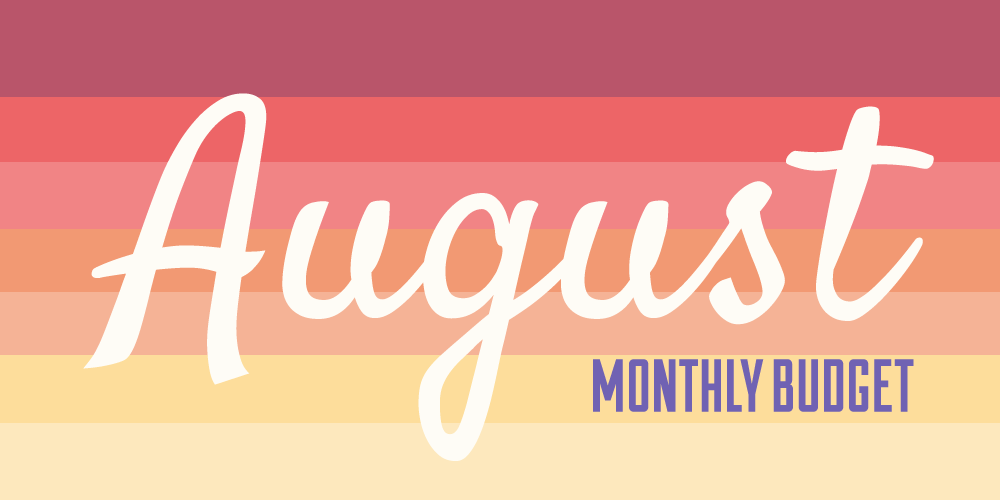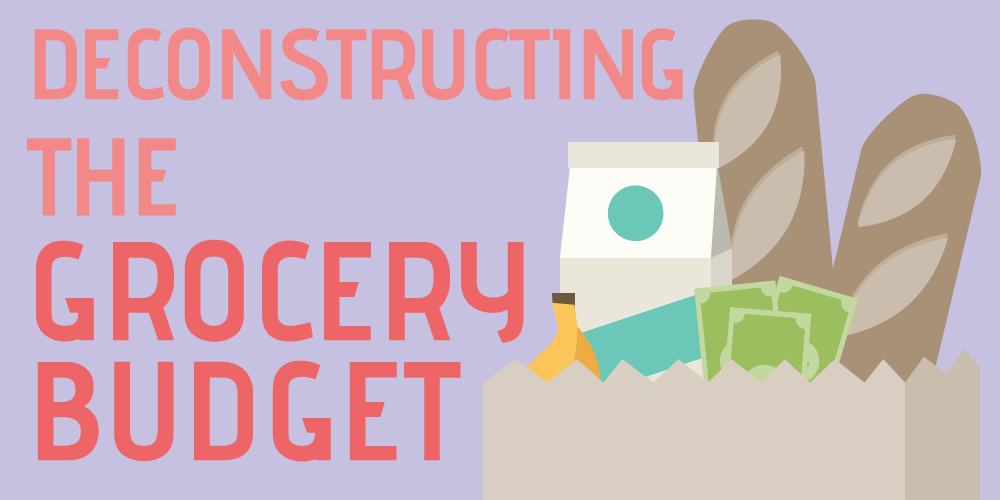The year keeps going! It won’t stop! It’s time for another budget update.
Looking Back: July Monthly Budget
We aren’t that far into August and I already feel like I’ve forgotten what happened in July! I did better in July than I did in June from a spending perspective, but I still ended the month with a negative net income. August is my month to get back on track, as I will be going on vacation for a week and a half in September.
The July Budget Good
- Work Lunch: I was a dollar over my work lunch budget ($40 for the month), so I’m pretty happy with how well I’ve been estimating and spending in that category.
- Home Supplies: Similar to my work lunch budget, I went over only by a couple of dollars. I think $20 per month has been a good estimate/reflection of my spending habits in this category. Now if only all categories could be estimated so well!
The July Budget Bad
- Restaurants: My restaurant spending was a bit out of control in July. I spent $400 when I budgeted for $200! This is probably due to a couple of factors: 4th of July festivities and a couple of evenings out after work. I’m going to try to be more mindful this month, in preparation for my trip in September.
- Everything Else: The one-off expenses added up in July. I signed up for a half marathon in September and have not yet received the 50% reimbursement from my work’s health subsidy. I also paid some deposits for my upcoming trip. Finally, I had a number of hair/makeup expenses as I was running low on shampoo and some makeup items.
July’s Net Income
Since I’m pretty vague about what my actual income is (on purpose), I decided to add another piece of information to give you a sense for how my spending mapped to my income for the month: net income. You can usually tell how well or poor a month went by how much you spent vs. how much you brought in. In July, my net income was -$625. This means that I spent more than I earned last month. This was a great improvement over June, but I’d still like to see it in the green for the next couple of months. Two items to note: The money that one of my friends owes me for her share of our trip and the reimbursement for my fitness subsidy aren’t accounted for in this number.
My August Monthly Budget
Now that I know how July went, I know how I can improve this month.
Rent: $1075 (my portion of rent – not split exactly 50/50 but almost 50/50)
Utilities & Non-Discretionary
- Gas (my portion): $25
- Electric (my portion): $50 – Bumping this up by $10 due to it being summer.
- Internet (my portion): $28
- Cell Phone (my portion): $56
- Employer-Sponsored Health Insurance: $108
Car & Transport
From now on, I’m removing fuel from my budget. Since Richard is now driving to work as opposed to working from home, he is driving more than me. Since our shared fuel costs are typically low, we decided he will cover all fuel.
- Car Insurance (rolls over monthly): $66 (plus $198 from rollover)
- Metro: $80 (taken directly out of my paycheck and applied to my Metro card)
Food
- Groceries (my portion): $350 – Moving this back to $350. Seeing if I can get it closer to $300 though.
- Restaurants (my portion): $200
- Work Lunch: $40
Debt
Each month, I pay a total of $775 to minimum loan payments. Not that I’m counting or anything, but this expense is second only to rent in my monthly budget.
- Student Loans Minimum: $565
- Car Loan: $215
Shopping & Miscellaneous
Pets, clothes and home supplies all come up at infrequent intervals, so I set aside an amount each month to contribute and if I don’t spend it, it rolls over to the next month. Everything else is everything that doesn’t fit into a neat budget. I’ve increased my everything else budget to account for some one-off expenses.
- Pets (my portion – rolls over monthly): $60 (rollover set to $0) – I’m setting the rollover to $0, because keeping track of the vet expenses from April & May wasn’t really helping me keep track of my current spending.
- Clothes (rolls over monthly): $200 (rollover reset to $0) – Bumping this up again due to the fact that I keep going over and I was beginning to realize that $100 doesn’t get you very far when you need to account for shoes AND clothes.
- Home Supplies (my portion – rolls over monthly): $20 (plus $2 rollover from last month)
- Everything else: $400
Total Expenses: $3,538 (minus savings and extra student loans)
And don’t forget…
Savings & Extra Student Loan Payments: I generally contribute 25% of take home pay. All of the money that goes to savings and extra student loans is split up in a 30:70 ratio with 30% going to savings and 70% going to student loans. Some of my savings is short-term – I save for the irregular one-off expenses that I know will come up throughout the year. I put the majority of my savings into my long-term emergency fund though.
Retirement Contributions: I contribute 6% to my employer-sponsored 401(k) each pay period.
Notes About My Monthly Budget
“My Portion”: You’ll notice that there are a few “my portion” indicators next to my monthly budget line items. This means that it’s an expense that Richard and I split. For 99% of the things we split, we split right down the middle.
Rolls Over Monthly: This year, I’ve been trying to become more purposeful in how I budget and allocate my money. In some categories, my expenses are sporadic. Two examples of this are pets and clothing. We are proud parents to two senior pets – as a result, we’ve decided to set aside some money every month to cover those inevitable vet costs. For clothing, I prefer to do big shopping trips a few times a year rather than shopping in smaller spurts more frequently. By rolling over my budget each month, I make sure I’m accounting for the inevitable expense.
August Challenges
I’m hoping that August will be the calm before the storm that is my Wild West trip in September. That in and of itself will be a challenge.
- Travel/Trip Prep: We should not have any additional accommodation expenses prior to leaving, but I have purchased a couple of items that I will need when we are on our trip (e.g. backpack, rain jacket).
- Food: I need to get a handle on food spending (still).
How did you do sticking to your budget in July? What are you budgeting for in August?



